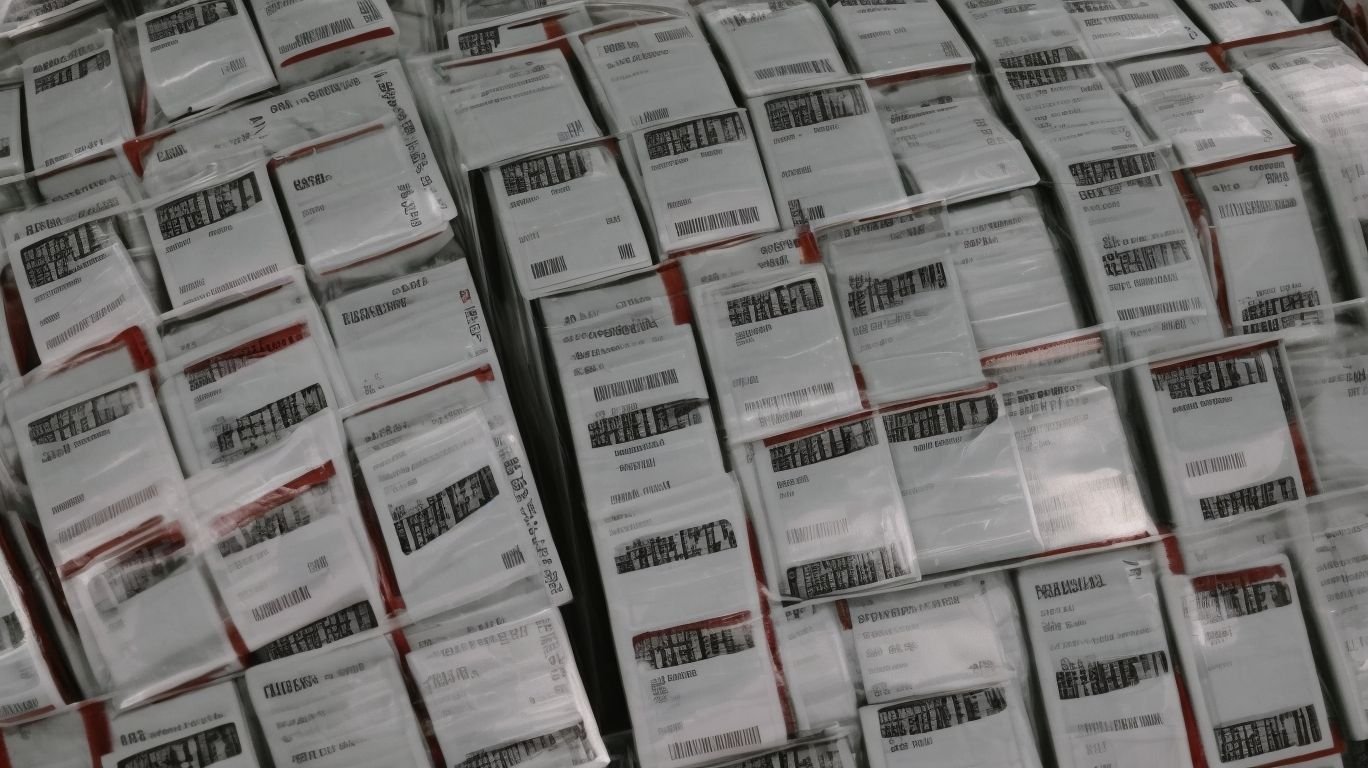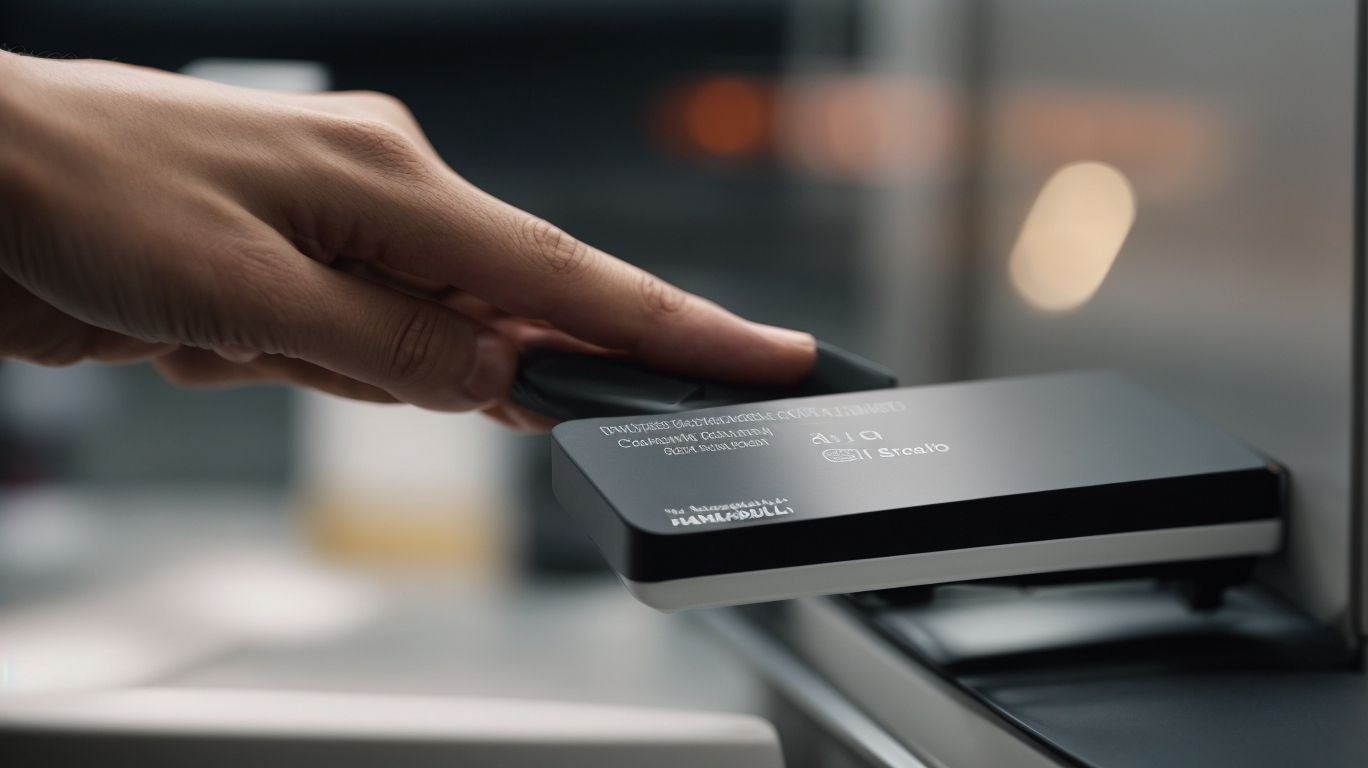RFID (Radio Frequency Identification) is a technology that uses radio waves to transfer data between a tag attached to an object and a reader. This technology has gained popularity in recent years for its ability to streamline processes and improve efficiency in bulk procurement. By utilizing RFID, companies can easily track and manage their inventory, reduce costs, and enhance security measures.
RFID tags work by emitting a radio frequency signal that is picked up by a reader, which then decodes the data embedded in the tag. This technology eliminates the need for manual scanning or data entry, making it a more efficient and accurate method for inventory management.
There are numerous benefits to using RFID for bulk procurement, including:
- Increased Efficiency: RFID can significantly reduce the time and effort required for inventory management and tracking, leading to increased efficiency.
- Improved Inventory Management: With real-time data and accurate tracking, companies can better manage their inventory levels and make more informed purchasing decisions.
- Enhanced Security: RFID tags can be programmed with encryption methods to prevent counterfeiting, making them a more secure option for bulk procurement.
- Cost Savings: By reducing the time and effort required for inventory management, companies can save on labor costs and reduce errors, leading to overall cost savings.
There are three main types of RFID tags: active, passive, and semi-passive. Each type has its own unique features and benefits, and the right choice depends on the specific needs and requirements of the company.
While RFID offers numerous benefits, there are also some potential risks and limitations to be aware of. These include interference and signal loss, privacy concerns, and initial investment and maintenance costs. However, with proper implementation and precautions, these risks can be mitigated.
To implement RFID for bulk procurement, companies should follow these steps:
- Conduct a Needs Assessment: Analyze the current processes and identify areas where RFID can improve efficiency and productivity.
- Choose the Right RFID System: Consider factors such as cost, compatibility, and functionality when selecting an RFID system.
- Train Employees and Create Protocols: Proper training and protocols are essential for successful implementation and use of RFID technology.
- Continuously Monitor and Improve the System: Regularly evaluate the RFID system and make necessary adjustments to ensure it is meeting the company’s needs effectively.
Key Takeaways:
What is RFID?

Photo Credits: Safemanlock.Com by Arthur Sanchez
RFID, or Radio Frequency Identification, is a technology that utilizes radio waves to identify and track objects. It is composed of a tag with a microchip and an antenna, and a reader that transmits and receives radio signals. When the reader emits a signal, the RFID tag responds with its unique identifier, allowing for efficient and precise identification.
RFID has a wide range of applications in sectors such as supply chain management, retail, healthcare, and access control. It enables effective inventory management, reduces errors in manual data entry, and improves security by automating access control systems.
With RFID, bulk procurement processes can be streamlined by tagging and tracking items throughout the supply chain. This ensures accurate inventory management, reduces losses, and enhances operational efficiency.
Fun fact: RFID technology is increasingly being utilized in contactless payment systems, allowing users to make transactions quickly and securely without the need for physical contact with a payment terminal.
How Does RFID Work?

Photo Credits: Safemanlock.Com by Ryan Clark
RFID (Radio Frequency Identification) is a technology that uses electromagnetic fields to automatically identify and track tags attached to objects. Here is a step-by-step explanation of how RFID works:
- Tag Initialization: Each RFID tag is assigned a unique identification code during manufacturing, which is programmed into its memory.
- Tag Activation: When an RFID tag comes within range of an RFID reader, it receives energy from the reader’s electromagnetic field, which activates the tag.
- Data Transmission: The activated tag uses the energy it receives to transmit its identification code back to the reader through radio waves.
- Reader Reception: The RFID reader captures the radio waves emitted by the tag and decodes the embedded identification code.
- Data Processing: The reader processes the received identification code and performs necessary actions based on the application requirements.
What Are the Benefits of Using RFID for Bulk Procurement?

Photo Credits: Safemanlock.Com by Patrick Allen
In today’s fast-paced world, efficiency and security are crucial for businesses to thrive. RFID technology has revolutionized the bulk procurement process by streamlining access and providing a wide range of benefits. In this section, we will discuss the numerous advantages of utilizing RFID for bulk procurement. From increased efficiency and improved inventory management to enhanced security and cost savings, RFID has greatly improved the process of bulk purchasing and has become an indispensable tool for many companies.
1. Increased Efficiency
When implementing RFID for bulk procurement, companies can achieve increased efficiency by following these steps:
- Conduct a needs assessment: Evaluate the current procurement process and identify areas where RFID technology can streamline operations.
- Choose the right RFID system: Select a system that meets the specific needs of the company, considering factors like the size of the operation, the type of products being procured, and the desired level of automation.
- Train employees and create protocols: Provide training to employees on how to use the RFID system effectively and establish standard operating procedures to ensure consistent and accurate data capture.
- Continuously monitor and improve the system: Regularly assess the performance of the RFID system, collect feedback from employees, and make necessary adjustments to optimize efficiency.
By following these steps, companies can experience increased efficiency in their bulk procurement operations by leveraging RFID technology.
With RFID, you’ll never have to play hide-and-seek with your inventory again.
2. Improved Inventory Management
Improved inventory management is a crucial benefit of utilizing RFID technology for bulk procurement. To enhance inventory management using RFID, follow these steps:
- Implement RFID tags on all inventory items: Attach RFID tags to each item to enable efficient tracking and monitoring.
- Install RFID readers and antennas: Set up RFID readers and antennas at strategic locations within the facility to capture tag data and improve inventory management.
- Integrate with inventory management software: Connect the RFID system with inventory management software to automate data collection and analysis, resulting in improved inventory management.
- Enable real-time visibility: Utilize the RFID system to provide real-time updates on inventory levels, location, and movements for enhanced inventory management.
- Streamline inventory reconciliation: Automate the inventory reconciliation process by leveraging RFID technology, reducing manual efforts and errors and improving inventory management.
By incorporating these steps, companies can experience improved accuracy, efficiency, and speed in inventory management, leading to better decision-making, reduced stockouts, minimized excess inventory, and enhanced overall supply chain performance.
With RFID, your inventory is more secure than a bank vault – unless you forget the password.
3. Enhanced Security
Enhanced security is one of the key benefits of utilizing RFID technology for bulk procurement. To ensure maximum security, companies can follow these steps:
- Implement access control: Use RFID tags to restrict access to authorized personnel only. This helps prevent unauthorized entry and reduces the risk of theft or tampering.
- Track and monitor assets: With the use of RFID technology, assets can be tracked in real-time throughout the procurement process. This helps to detect any discrepancies or missing items, enhancing security and accountability.
- Integrate with surveillance systems: By integrating RFID systems with video surveillance, any suspicious activities can be captured and overall security measures can be enhanced.
- Implement anti-counterfeiting measures: Utilizing RFID tags with unique identifiers can help verify the authenticity of products, preventing the use of counterfeit or unauthorized items in the procurement process.
Pro-tip: It is important to regularly update and maintain the RFID system to ensure optimal security performance. Conducting regular audits and training sessions can also help reinforce security protocols and prevent potential breaches.
4. Cost Savings
When it comes to bulk procurement, implementing RFID technology can result in significant cost savings. Here are some steps to consider:
- Automate inventory management: RFID systems can accurately track and manage inventory, reducing the need for manual labor and potential errors.
- Reduce loss and theft: RFID tags can help prevent loss and theft of valuable assets, reducing the financial impact on the company.
- Streamline operations: With real-time data and visibility, companies can optimize their supply chain, reducing unnecessary costs and improving efficiency.
- Minimize product expiration: RFID technology can track expiration dates, helping companies to minimize waste caused by expired products.
By following these steps, companies can harness the cost-saving benefits of RFID technology in bulk procurement. It’s important to carefully evaluate the specific needs of the business and choose the right RFID system to maximize the potential savings. Regular monitoring and continuous improvement of the system will ensure ongoing cost savings and operational efficiency.
From active to passive tags, RFID has more types than a high school clique – but they all serve one purpose: easier bulk procurement.
What Are the Different Types of RFID Tags?

Photo Credits: Safemanlock.Com by Daniel Carter
RFID technology has become increasingly popular for its ability to streamline access and track inventory in bulk procurement. However, not all RFID tags are created equal. In this section, we will discuss the different types of RFID tags available and their unique capabilities. From active RFID tags that constantly transmit data, to passive RFID tags that require an external reader, to semi-passive RFID tags that strike a balance between the two – we will explore the features and applications of each type. So, let’s dive in and learn more about the world of RFID tags.
1. Active RFID Tags
Active RFID tags are battery-powered devices that emit a signal and can communicate with RFID readers over longer distances. These tags are commonly used in applications where real-time tracking and monitoring are necessary.
Here are the steps to implement active RFID tags for bulk procurement:
- Conduct a thorough assessment of your procurement needs and identify areas where active RFID tags can improve efficiency, such as tracking inventory in large warehouses or monitoring the movement of goods during transportation.
- Select the most suitable active RFID system that aligns with your requirements. Consider factors such as tag range, battery life, and communication protocols to ensure seamless integration with your existing infrastructure.
- Train your employees on the proper use and handling of active RFID tags. Establish protocols for tag placement, tag maintenance, and troubleshooting common issues.
- Continuously monitor and improve the system by regularly checking tag performance, battery life, and signal quality. Make necessary adjustments to optimize the effectiveness of the active RFID tags.
Pro-tip: When selecting active RFID tags, consider the expected battery life and the ability to replace or recharge the batteries. This will help minimize downtime and ensure uninterrupted tracking and monitoring of your bulk procurement activities.
They may be passive, but these RFID tags pack a punch when it comes to managing your bulk procurement.
2. Passive RFID Tags
Passive RFID tags are a cost-effective and versatile option for bulk procurement. Here are the steps to effectively implement passive RFID tags:
- Understand the technology: Familiarize yourself with how passive RFID tags work and the advantages they offer in the procurement process.
- Identify use cases: Determine where passive RFID tags can be used in your procurement operations, such as tracking inventory or monitoring shipments.
- Select the right tags: Choose passive RFID tags that meet your specific requirements for read range, durability, and compatibility with your RFID system.
- Plan tag placement: Carefully position the tags on items or packaging to ensure optimal readability and minimize interference.
- Integrate with your system: Seamlessly integrate the passive RFID tags with your existing procurement software or systems to streamline data collection and analysis.
- Train employees: Educate your team on how to properly use and handle passive RFID tags, ensuring accurate scanning and data capture.
- Test and optimize: Thoroughly test the tags to ensure they are functioning correctly and make any necessary adjustments to improve performance.
- Monitor and maintain: Regularly monitor the performance of the passive RFID tags and conduct maintenance as needed to ensure their continued effectiveness.
3. Semi-passive RFID Tags
Semi-passive RFID tags are a unique type of radio frequency identification technology that combines the features of both active and passive tags. These tags are equipped with a battery to power the internal circuitry, while still relying on external RFID readers for communication. If you are considering using semi-passive RFID tags for bulk procurement, here are a few steps to keep in mind:
- Clearly identify the specific requirements of your bulk procurement process.
- Thoroughly research and carefully select a reliable and reputable supplier of semi-passive RFID tags.
- Consider the range and read capabilities of the tags to ensure they are suitable for your procurement needs.
- Ensure compatibility between the semi-passive RFID tags and your existing RFID infrastructure.
- Create and implement an effective tagging strategy, including proper tag placement and attachment methods.
- Train your employees on the proper use and handling of semi-passive RFID tags.
- Establish protocols for managing and maintaining the tags, such as battery replacement or recharging.
- Regularly monitor and evaluate the performance of the semi-passive RFID tags to identify any issues or areas for improvement.
By following these steps, you can effectively incorporate semi-passive RFID tags into your bulk procurement process to improve efficiency, streamline inventory management, and enhance security.
RFID may be efficient for bulk procurement, but watch out for signal loss and privacy issues – it’s not just for aliens tracking cows anymore.
What Are the Possible Risks and Limitations of Using RFID for Bulk Procurement?

Photo Credits: Safemanlock.Com by Walter Thomas
While RFID technology offers numerous benefits for bulk procurement, it is important to acknowledge the potential risks and limitations that come with its use. In this section, we will discuss three main aspects to consider: interference and signal loss, privacy concerns, and initial investment and maintenance costs. By understanding these potential drawbacks, we can make informed decisions on the implementation of RFID for streamlined access in bulk procurement.
1. Interference and Signal Loss
Interference and signal loss are potential risks that may arise when utilizing RFID for bulk procurement. However, there are measures that companies can take to minimize these concerns and ensure a smooth implementation of RFID technology:
- Conduct a site survey: Before implementing RFID, assess the environment for possible sources of interference, such as metal or other electronic devices.
- Optimize tag placement: Properly position RFID tags to maximize readability and minimize the chance of interference. Avoid placing tags near metal or other materials that may obstruct the signal.
- Choose the right frequency: Different frequencies have varying levels of susceptibility to interference. Select the frequency that best suits the specific needs of the procurement process.
- Test and monitor the system: Regularly test and monitor the RFID system to identify and promptly address any signal loss or interference issues.
- Implement signal amplifiers or repeaters: If signal loss or interference is still a concern, consider using signal amplifiers or repeaters to boost signal strength and extend coverage.
By following these steps, companies can mitigate the risks of interference and signal loss and ensure the successful implementation of RFID technology for bulk procurement.
2. Privacy Concerns
Privacy concerns are an important consideration when implementing RFID for bulk procurement. Companies must take steps to protect the privacy of individuals and sensitive data. Here are some steps to address these concerns:
- Conduct a Privacy Impact Assessment: Evaluate the potential risks and impacts on privacy associated with the RFID system. Identify any personal information that will be stored or collected and assess the potential privacy implications.
- Implement Privacy Safeguards: Implement measures to protect personal information, such as encryption, access controls, and data anonymization. Limit the collection, use, and retention of personal data to what is necessary for business purposes.
- Provide Notice and Consent: Inform individuals about the use of RFID technology, its purpose, and any potential privacy implications. Obtain consent from individuals when necessary.
- Train Employees: Educate employees about privacy policies and procedures to ensure they understand how to handle personal information appropriately and maintain confidentiality.
- Regularly Review and Update Policies: Continuously monitor and review privacy policies and procedures to ensure they remain effective and up to date with evolving privacy laws and regulations.
- Respond to Privacy Complaints: Establish a process for handling privacy complaints and provide individuals with a means to report any privacy concerns or breaches.
3. Initial Investment and Maintenance Costs
Implementing RFID for bulk procurement may require an initial investment and ongoing maintenance costs. However, these expenses can be justified by the long-term benefits and efficiencies gained. Here are the steps to effectively manage the initial investment and maintenance costs:
- Conduct a cost-benefit analysis: Evaluate the potential savings and improvements that RFID can bring to your bulk procurement process. This analysis will help determine if the initial investment and ongoing maintenance costs are worthwhile.
- Set a budget: Allocate a specific budget for the implementation and maintenance of the RFID system. This will help control costs and ensure that you are investing within your means.
- Select the right RFID system: Choose an RFID system that fits your budget and meets your requirements. Consider factors such as the cost of tags, readers, and other hardware components.
- Train employees: Invest in training programs to ensure that your employees can efficiently operate and maintain the RFID system. This will reduce the risk of costly errors or system downtime.
- Regular maintenance and upgrades: Develop a maintenance plan that includes routine system checks, updates, and repairs. This proactive approach will help prevent major issues and extend the lifespan of your RFID system, ultimately reducing long-term maintenance costs.
- Continuously monitor and optimize: Regularly assess the performance of your RFID system and identify areas for improvement. This will help streamline operations and potentially reduce costs over time.
By following these steps, companies can effectively manage the initial investment and maintenance costs associated with implementing RFID for bulk procurement.
How Can Companies Implement RFID for Bulk Procurement?

Photo Credits: Safemanlock.Com by David Rivera
Companies are constantly seeking ways to streamline and improve their operations, and implementing RFID technology for bulk procurement is a highly effective solution. However, the process of implementing RFID may seem daunting to some. In this section, we will break down the steps involved in successfully implementing RFID for bulk procurement. From conducting a needs assessment to continuously monitoring and improving the system, we will provide valuable insights to help companies make the most of this innovative technology.
1. Conduct a Needs Assessment
Conducting a needs assessment is a crucial step when implementing RFID for bulk procurement. It helps companies understand their requirements, challenges, and goals before choosing the right RFID system. Here are the steps to conduct a needs assessment:
- Identify the objectives: Determine what you hope to achieve by conducting a needs assessment for implementing RFID technology. This could include improving inventory accuracy, reducing errors, or streamlining the procurement process.
- Analyze existing processes: Evaluate your current procurement processes and identify pain points or areas that could benefit from the use of RFID technology.
- Assess volume and scale: Determine the volume of items involved in bulk procurement and the scale of operations. This will aid in determining the type and capacity of the required RFID system.
- Consider infrastructure requirements: Assess your current infrastructure, such as network capabilities and IT systems, to ensure compatibility with RFID technology.
- Evaluate budget and resources: Determine the budget allocated for RFID implementation, including hardware, software, and ongoing maintenance costs. Also, assess the availability of internal resources or the need for external expertise.
- Engage stakeholders: Involve key stakeholders, including procurement managers, IT personnel, and end-users, to gather their input and ensure their support for the RFID implementation.
Don’t choose the wrong RFID system, or your bulk procurement will be a costly game of hide-and-seek.
2. Choose the Right RFID System
Choosing the right RFID system for bulk procurement requires careful consideration of various factors. Follow these steps to ensure a successful implementation:
- Conduct a Needs Assessment: Evaluate your specific requirements, such as the desired level of automation, range, and data storage capacity.
- Research and Comparison: Explore different RFID system providers and compare their offerings in terms of cost, features, compatibility, and scalability.
- Consider Integration: Determine if the RFID system needs to integrate with existing procurement or inventory management systems.
- Evaluate Performance: Test the performance of the RFID system in real-life scenarios to ensure it meets your expectations and requirements.
- Choose the Right Select RFID tags suitable for your procurement needs, considering factors like read range, durability, and environmental compatibility.
- Assess Support and Maintenance: Evaluate the vendor’s support services, including training, troubleshooting, and ongoing maintenance.
- Cost Analysis: Consider the upfront investment, ongoing costs, and potential return on investment when selecting an RFID system.
By following these steps, businesses can choose the right RFID system that aligns with their bulk procurement needs, ensuring enhanced efficiency and streamlined access.
3. Train Employees and Create Protocols
When implementing RFID for bulk procurement, training employees and creating protocols are crucial steps to ensure successful adoption and usage of the technology. Here is a list of steps to follow:
- Assess employee training needs: Identify the specific knowledge and skills required for employees to effectively use RFID technology in bulk procurement.
- Design training programs: Develop comprehensive training programs that cover the fundamentals of RFID technology, including operating RFID scanners, reading tags, and troubleshooting common issues.
- Implement training sessions: Conduct hands-on training sessions to provide employees with practical experience using RFID technology in real-world scenarios.
- Create protocols: Establish clear protocols for the use of RFID technology in various procurement processes, including tag placement, data entry, and reporting.
- Communicate and reinforce protocols: Clearly communicate the protocols to all employees involved in the procurement process and regularly reinforce their importance to ensure compliance.
Remember, continuous monitoring and improvement of the RFID system is essential to address any issues and optimize its performance. Regularly seek feedback from employees and make necessary adjustments to enhance efficiency and accuracy in bulk procurement.
4. Continuously Monitor and Improve the System
To guarantee the successful implementation of an RFID system for bulk procurement, it is essential for companies to consistently monitor and improve the system. This helps optimize the benefits and address any potential issues that may arise. Here are the crucial steps for effectively monitoring and improving the RFID system:
- Regular System Audits: Conduct routine audits to evaluate the performance of the RFID system. This includes checking for any technical glitches, identifying areas of improvement, and ensuring compliance with established protocols.
- Data Analysis: Analyze the collected data to identify patterns, trends, and potential areas for optimization. This can help identify bottlenecks, improve inventory accuracy, and enhance overall efficiency.
- Feedback Collection: Gather feedback from employees, suppliers, and other stakeholders involved in the procurement process. This input can provide valuable insights into system performance and areas that require improvement.
- Continuous Training: Provide regular training sessions to employees to ensure they are up to date with the RFID system’s functionalities and protocols. This helps maximize the system’s potential and minimize errors.
- Collaboration with RFID Providers: Maintain open communication with RFID system providers to stay informed about software updates, technological advancements, and best practices for system optimization.
By following these steps, companies can ensure the continuous monitoring and improvement of their RFID system, leading to enhanced efficiency, accuracy, and overall success in bulk procurement processes.
Frequently Asked Questions
What is RFID and how is it used in the retail industry?
RFID (Radio Frequency Identification) technology is a contactless identification system that uses electromagnetic fields to track and identify objects. In the retail industry, RFID tags are attached to products and can be tracked using an RFID reader. This technology provides real-time and accurate data on inventory, allowing retailers to make better decisions about inventory management, restocking, and product promotions.
How does RFID technology enhance the customer experience?
By ensuring products are always in stock and available for purchase, RFID technology reduces customer frustration and increases satisfaction. It also enables retailers to provide personalized shopping experiences by tracking consumer behavior and identifying trends and patterns.
Can RFID help prevent theft and unauthorized access?
Yes, RFID technology helps prevent theft and unauthorized access by monitoring the movement of products from manufacturer to retailer. Any irregularities can be quickly detected, triggering immediate alerts and reducing losses. This technology also enhances security measures within the supply chain.
What are the key benefits of RFID technology in procurement processes?
RFID technology offers increased visibility throughout the supply chain, real-time data capture during receiving processes, and automated inventory tracking, leading to more efficient operations. It also minimizes financial losses due to stolen or misplaced items and reduces labor costs by eliminating manual processes.
Are there any real-life examples of successful RFID implementations in the retail industry?
Yes, there are several case studies of retailers successfully utilizing RFID technology. For example, fashion retailer Zara has implemented RFID to track inventory and improve stock levels, resulting in optimal utilization of resources and reducing overstock situations. Home Depot has also implemented RFID to enhance customer experience and reduce labor costs.
What are the key considerations for implementing RFID in procurement processes?
Some key considerations for implementing RFID in procurement include compatibility with existing systems, cost-benefit analysis, and training and adoption by employees. It is also essential to have a clear understanding of the business environment and potential challenges in implementing RFID technology.



